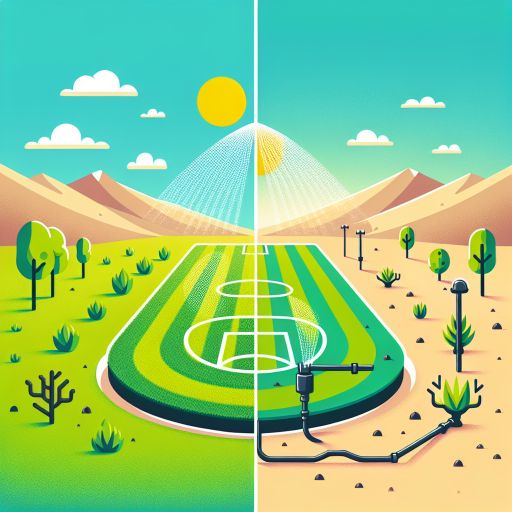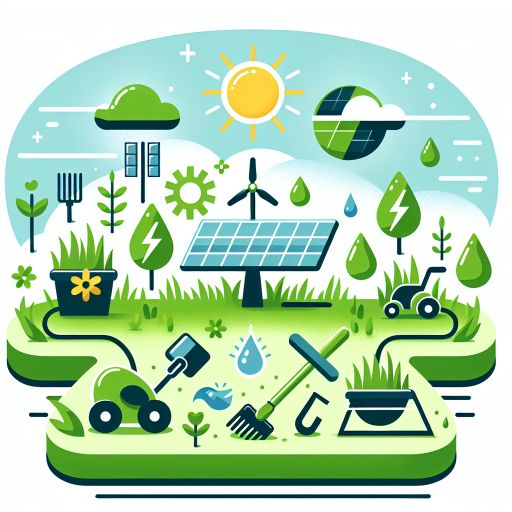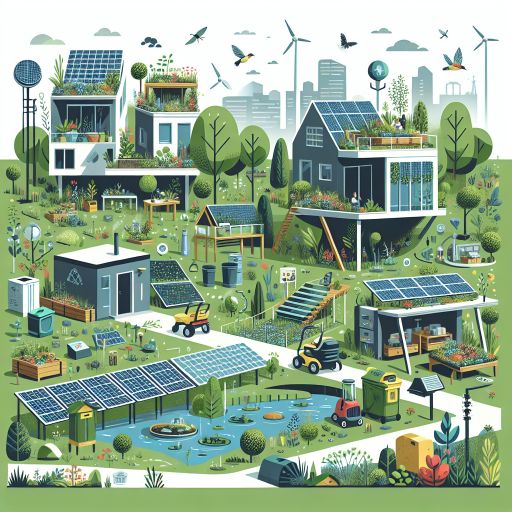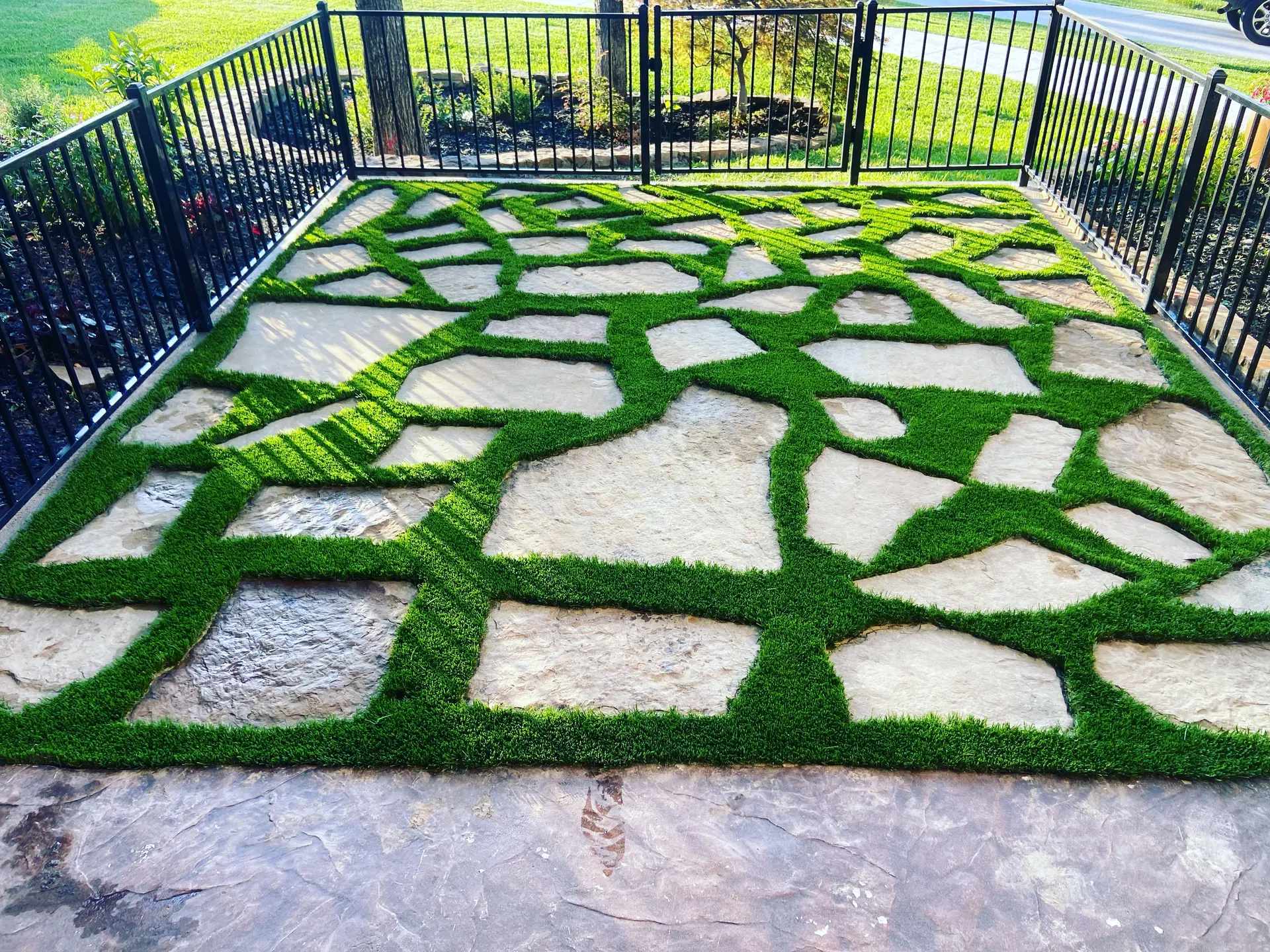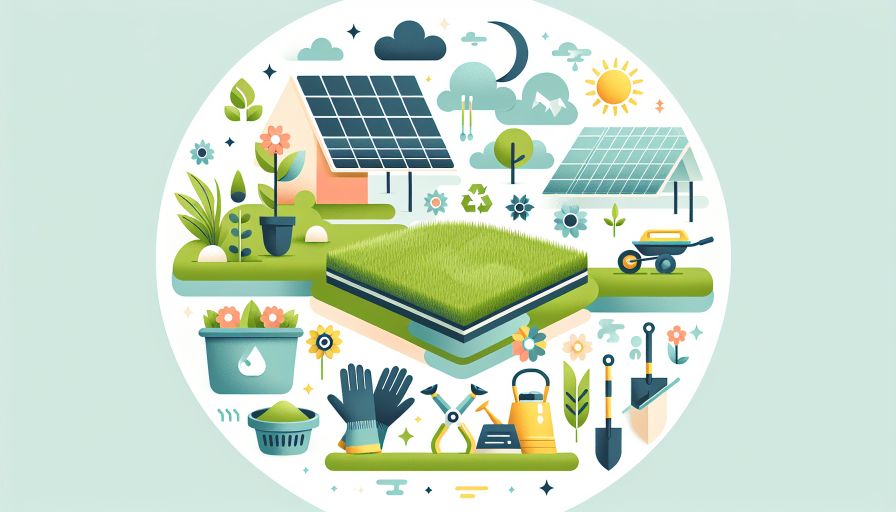
- Introduction to Eco-Friendly Landscaping Alternatives
- Overview of Synthetic Turf in Sustainable Landscaping
- Environmental Impact of Natural Grass vs. Synthetic Turf
- Water Conservation with Synthetic Turf
- Energy and Resource Savings in Maintaining Synthetic Turf
- Benefits of Synthetic Turf for Biodiversity and Soil Health
- Case Studies: Successful Implementation of Synthetic Turf
- Future Trends and Innovations in Sustainable Landscaping Practices
Introduction to Eco-Friendly Landscaping Alternatives
Eco-friendly landscaping alternatives have become increasingly significant in recent years due to growing environmental concerns and the need for sustainable practices. This shift towards sustainability in landscaping aims to address issues such as water conservation, reduction of chemical use, and minimizing maintenance energy expenditure. One notable alternative that has gained attention is the use of synthetic turf.
Synthetic turf, also known as artificial grass, is designed to mimic the appearance and feel of natural grass. It is constructed from various synthetic fibers, typically made from polyethylene, polypropylene, or nylon. These fibers are intricately woven into a backing material and infilled with substances like sand or rubber to provide stability and resilience.
The primary motivations for adopting synthetic turf in landscaping are its numerous environmental benefits. One of the most significant advantages is its water conservation potential. Unlike natural grass, synthetic turf does not require regular watering, which can significantly reduce household water usage. This is particularly beneficial in regions experiencing water scarcity or frequent droughts.
The following table outlines some key comparisons between natural grass and synthetic turf:
| Aspect | Natural Grass | Synthetic Turf |
|---|---|---|
| Water Usage | High | Low |
| Maintenance | Frequent mowing, fertilizing, weeding | Occasional brushing and infill addition |
| Chemical Use | Pesticides and herbicides required | No chemical treatments needed |
| Lifespan | Variable, often needs replanting | 10-15 years |
Another significant benefit of synthetic turf is the reduction in maintenance requirements. Traditional lawn care often involves mowing, fertilizing, and applying pesticides and herbicides, all of which have environmental downsides. Mowers and other lawn equipment typically run on fossil fuels and contribute to greenhouse gas emissions. In contrast, synthetic turf requires minimal maintenance, thereby reducing the carbon footprint associated with its upkeep.
In summary, advancing eco-friendly landscaping alternatives like synthetic turf presents a feasible solution for sustainable landscaping. Its numerous environmental benefits, such as reduced water and chemical use, combined with lower maintenance demands, make synthetic turf a practical and effective choice for those looking to implement sustainable practices in their landscaping endeavors.
Overview of Synthetic Turf in Sustainable Landscaping
In recent years, the landscaping industry has increasingly focused on sustainability, driven by concerns over resource depletion, climate change, and environmental degradation. Synthetic turf has emerged as a notable alternative to natural grass, offering various attributes that align with eco-friendly landscaping principles.
Synthetic turf, often referred to as artificial grass, is made from synthetic fibers designed to mimic the appearance of natural grass. It typically consists of polyethylene blades tufted into a backing material, which is then filled with infill substances like sand or crumb rubber to provide stability and cushion. Modern synthetic turf products have evolved to offer enhanced durability, aesthetic appeal, and environmental benefits.
The development of synthetic turf has undergone significant advancements, reducing its ecological footprint and improving its functional characteristics. For instance, the use of recycled materials in the production of synthetic grass fibers and infill has become more common. Products such as Envirofill and Geofill incorporate components like silica sand and coconut fibers to create eco-friendly alternatives to traditional infill materials.
One key aspect of synthetic turf in sustainable landscaping is its longevity. High-quality synthetic turf systems can last for up to 15-20 years with minimal maintenance, significantly reducing the need for resources associated with regular upkeep. This is in stark contrast to natural grass, which requires frequent mowing, fertilizing, and watering to maintain its appearance and health.
Furthermore, synthetic turf eliminates the need for pesticides and herbicides, which are commonly used in natural grass maintenance. The reduction of these chemicals not only benefits the immediate environment but also helps protect water sources from contamination. It has been noted that runoff from lawns treated with chemicals can contribute to algal blooms and other ecological issues in local waterways.
Another advantage of synthetic turf is its ability to withstand various weather conditions. Unlike natural grass that may struggle during droughts or become muddy and patchy during heavy rains, synthetic turf maintains a consistent appearance and usability year-round. This resilience makes synthetic turf a practical solution in regions prone to extreme weather patterns or water restrictions.
While there are numerous benefits associated with synthetic turf, it is essential to acknowledge and address potential environmental concerns. The disposal of synthetic turf at the end of its life cycle poses challenges, as traditional synthetic turf materials are not biodegradable. However, industry advancements are focusing on developing more sustainable end-of-life solutions, such as recycling programs and the use of biodegradable components.
In conclusion, synthetic turf presents several compelling advantages as an eco-friendly alternative in sustainable landscaping. Its long lifespan, low maintenance requirements, and elimination of harmful chemicals make it a viable option for reducing environmental impact. As technology advances, the environmental performance of synthetic turf is expected to continue improving, making it an increasingly attractive choice for sustainable landscaping efforts.
Environmental Impact of Natural Grass vs. Synthetic Turf
When considering the environmental impact of landscaping choices, it’s essential to compare natural grass and synthetic turf across various aspects such as resource consumption, chemical usage, and overall ecological footprint.
Water Usage
Natural grass lawns typically require regular watering to remain healthy and green. According to the U.S. Environmental Protection Agency (EPA), outdoor water use in the U.S. accounts for nearly 30% of total household water use, and a significant portion of this is used for watering lawns and gardens. On average, a well-maintained natural grass lawn requires around 55 gallons of water per square foot annually.
In contrast, synthetic turf does not require watering. This significant reduction in water usage can benefit regions prone to droughts or areas with water restrictions. The elimination of weekly or even daily watering can lead to substantial water conservation over time.
Chemical Use
Maintaining a natural grass lawn often involves the use of fertilizers, pesticides, and herbicides to manage growth and control pests and weeds. These chemicals can run off into waterways, potentially contaminating local water supplies and harming aquatic ecosystems. The U.S. Geological Survey (USGS) found that widespread use of lawn chemicals contributes to pollution in nearby rivers and streams.
Synthetic turf, on the other hand, does not require chemical treatments. This can help reduce the introduction of harmful substances into the environment, promoting a cleaner and healthier ecosystem.
Carbon Footprint
The carbon footprint of maintaining a natural grass lawn includes emissions from lawnmowers, leaf blowers, and other garden equipment. The EPA estimates that gasoline-powered lawn and garden equipment contributes significantly to air pollution, with a single gas-powered lawn mower producing as much pollution in one hour as 11 cars. Additionally, the production and transportation of fertilizers and pesticides add to the overall carbon emissions associated with natural grass.
While the production of synthetic turf does involve the use of fossil fuels and generates emissions, once installed, synthetic turf requires minimal maintenance compared to natural grass. This reduction in the need for powered garden equipment and chemical treatments can result in a lower overall carbon footprint over the lifespan of the turf.
Waste and Longevity
Natural grass can produce organic waste through mowing and seasonal changes, which can be composted but still requires time and effort for management. The lifespan of a natural grass lawn varies but usually involves reseeding, replanting, and repairing damaged areas over time.
Synthetic turf typically has a lifespan of 10-15 years, after which it needs replacement. However, advancements in recycling technologies have enabled some manufacturers to recycle old synthetic turf into new products, reducing waste. Additionally, the long-term durability of synthetic turf means fewer resources are needed for repairs and replacements compared to natural grass.
In summary, while both options have their own environmental impacts, synthetic turf presents certain advantages such as reduced water and chemical usage, lower carbon emissions from maintenance activities, and potential recyclability. Careful consideration of these factors can guide those interested in sustainable landscaping toward making informed and more environmentally friendly decisions.
Water Conservation with Synthetic Turf
Water conservation is a significant benefit of using synthetic turf in landscaping. Unlike natural grass, which requires consistent watering, synthetic turf eliminates the need for irrigation.
According to the Environmental Protection Agency (EPA), the average American household uses around 320 gallons of water per day, with about 30% dedicated to outdoor uses, mainly lawn and garden maintenance. Implementing synthetic turf can reduce this outdoor water use dramatically, contributing to significant water conservation.
In regions facing frequent droughts or experiencing water shortages, the adoption of synthetic turf can be particularly impactful. For example, in California, where drought conditions have become increasingly severe, many homeowners and municipalities have turned to synthetic turf as a water-saving measure. The Los Angeles Times reported that replacing natural grass with synthetic turf could save up to 55 gallons of water per square foot annually.
Water conservation with synthetic turf not only benefits individual homeowners and municipalities but also has broader environmental and economic implications. Resource-strained areas can redirect saved water to essential uses, supporting sustainability efforts. Reduced water consumption also translates to lower water bills, offering economic benefits to residents and local governments.
In addition to residential spaces, commercial properties and public spaces have also adopted synthetic turf for its water-saving properties. Parks, sports fields, and school grounds equipped with synthetic turf contribute to community-wide water conservation efforts. Across these various applications, synthetic turf consistently demonstrates a significant reduction in the need for irrigation.
Overall, replacing natural grass with synthetic turf represents a substantial and effective measure for conserving water. This practice aligns with broader goals of sustainable landscaping by reducing water consumption, conserving a critical natural resource, and providing economic benefits to users. The role of synthetic turf in water conservation underscores its importance in sustainable landscaping practices.
Energy and Resource Savings in Maintaining Synthetic Turf
One of the notable advantages of synthetic turf is its contribution to energy and resource savings. The maintenance requirements for synthetic turf are significantly lower compared to natural grass, which translates into considerable energy and resource conservation.
Reduction in Energy Usage
Maintaining natural grass requires a significant amount of energy, particularly for mowing, which typically involves gas-powered equipment. Studies have shown that traditional lawn mowers produce high levels of pollution, contributing to greenhouse gas emissions. As synthetic turf does not require mowing, it effectively reduces energy consumption and emissions.
Minimizing Use of Fertilizers and Pesticides
Natural grass maintenance often involves the application of fertilizers, herbicides, and pesticides to ensure a healthy and aesthetically pleasing lawn. These chemicals can sometimes leach into the soil and water systems, causing environmental harm. With synthetic turf, the use of such chemicals is eliminated, thereby reducing potential ecological damage and saving resources needed for their production and application.
Water Savings
Water conservation is another area where synthetic turf offers significant benefits. Unlike natural grass, which requires regular watering to maintain its appearance and health, synthetic turf requires minimal to no irrigation. This significantly reduces water usage, making it an essential component in sustainable landscaping, especially in regions prone to drought.
Maintenance Equipment and Labor
Maintaining natural grass lawns involves various equipment such as lawn mowers, aerators, and sprinklers. Additionally, there is a labor cost associated with regular mowing, edging, and other maintenance activities. By contrast, synthetic turf requires only occasional brushing and rinsing to keep it clean, leading to lower overall maintenance costs and resource use.
Energy and Resource Savings Comparison
The table below provides a comparison of energy and resource consumption between natural grass and synthetic turf:
| Aspect | Natural Grass | Synthetic Turf |
|---|---|---|
| Energy Usage | High (mowing, edging, etc.) | Low |
| Water Consumption | High (regular watering) | Low |
| Chemical Use (fertilizers/pesticides) | High | None |
| Labor Requirements | High (frequent maintenance) | Low |
In summary, synthetic turf presents a compelling case for energy and resource savings in landscaping practices. By significantly lowering the need for energy usage, water consumption, and chemical applications, it offers a sustainable alternative to traditional natural grass lawns.
Benefits of Synthetic Turf for Biodiversity and Soil Health
Synthetic turf offers several benefits for biodiversity and soil health when used as an eco-friendly landscaping alternative. While traditional grass lawns often require significant maintenance and the application of pesticides and herbicides, synthetic turf reduces the need for such chemical interventions, which can be harmful to local flora and fauna.
Biodiversity Benefits
One of the primary benefits of synthetic turf for biodiversity is the reduction of chemical usage. Conventional lawns often necessitate fertilizers, pesticides, and herbicides to maintain their appearance and health. These chemicals can leach into groundwater and run off into local streams, adversely affecting aquatic ecosystems and soil organisms. Synthetic turf eliminates this requirement, thereby reducing chemical runoff and promoting healthier ecosystems.
Additionally, synthetic turf can prevent the introduction and spread of invasive plant species. Natural grass lawns sometimes become conduits for invasive species, which can outcompete native plants and reduce biodiversity. By using synthetic turf, landscape managers can provide a stable and controlled environment that does not support invasive species’ growth and expansion.
Soil Health
Soil compaction is a common problem in areas with heavy foot traffic, such as sports fields and residential lawns. Compacted soil can reduce water infiltration and root growth, negatively impacting soil health. Synthetic turf systems often include a sub-layer designed to promote proper drainage and prevent soil compaction. This improved soil structure can enhance root health and water infiltration in surrounding areas.
Synthetic turf also helps in erosion control. In landscapes with natural grass, heavy rainfall or irrigation can lead to soil erosion. Synthetic turf, with its robust backing systems, stabilizes the soil underneath and prevents erosion, thus maintaining the topsoil and its organic content.
Incorporation with Native Landscaping
Integrating synthetic turf with native plants can enrich local biodiversity. Native plants are adapted to local climate conditions and provide essential habitats for local wildlife. While synthetic turf provides a low-maintenance ground cover, incorporating native plant species in and around synthetic turf areas can create a balanced landscape that supports local biodiversity.
For example, buffer zones of native plants around synthetic turf fields can enhance habitats for pollinators such as bees and butterflies. These zones also act as natural barriers, further preventing the spread of any potential synthetic turf byproducts into the natural environment.
Microbial Activity
Although synthetic turf itself does not support the microbial activity found in natural grass, the materials used in modern turf systems are designed to be neutral and non-toxic. Innovations in synthetic turf technology include components that can host beneficial microbes, though research in this area is ongoing.
Overall, synthetic turf presents a viable eco-friendly alternative that mitigates some of the adverse environmental impacts associated with natural grass lawns. When combined with thoughtful landscape planning and the inclusion of native plant species, synthetic turf can contribute positively to biodiversity and soil health.
Case Studies: Successful Implementation of Synthetic Turf
Case Studies: Successful Implementation of Synthetic Turf
Over the past decades, various municipalities, educational institutions, and private properties have transitioned from natural grass to synthetic turf. The switch has been motivated largely by the need for more sustainable and maintenance-efficient solutions. Here are some notable real-world examples highlighting the successful implementation of synthetic turf:
Municipal Parks:
In several cities across the United States, municipal parks have adopted synthetic turf to combat issues related to environmental sustainability and maintenance costs. For instance, the City of San Francisco initiated the “Sustainable Parks Initiative” which involved the installation of synthetic turf in multiple public parks. This initiative significantly reduced water consumption—a critical concern given California’s recurring drought conditions. According to the San Francisco Recreation and Park Department, these installations have saved millions of gallons of water annually.
Schools and Universities:
Educational institutions, such as Harvard University, have also opted for synthetic turf on their sports fields. This decision was partly influenced by the need to provide a consistent and safe playing surface throughout the year. A study conducted by the Harvard Office for Sustainability revealed that the use of synthetic turf has greatly minimized water usage, eliminated the need for chemical fertilizers, and reduced greenhouse gas emissions associated with traditional lawn maintenance equipment.
Residential Properties:
Homeowners in drought-prone regions, such as Arizona and Nevada, have increasingly turned to synthetic turf to create sustainable and visually appealing landscapes. The Southern Nevada Water Authority has reported that residential use of synthetic turf has resulted in significant water savings. Properties with synthetic turf can save as much as 55 gallons of water per square foot annually compared to traditional grass lawns. This transition not only supports water conservation efforts but also reduces monthly utility bills for homeowners.
Sports Facilities:
Globally recognized sports facilities have also embraced synthetic turf owing to its durability and low-maintenance requirements. Wembley Stadium in London, which hosts numerous high-profile events each year, chose synthetic turf to ensure a high-quality playing surface regardless of weather conditions. The transition has proven beneficial in reducing downtime for field maintenance and providing a uniform playing area for athletes.
These examples demonstrate that synthetic turf can effectively meet the goals of sustainability and resource efficiency. Whether it’s reducing water consumption, cutting down on maintenance costs, or enhancing safety and durability, synthetic turf has proven its worth as an eco-friendly alternative in various contexts.
Future Trends and Innovations in Sustainable Landscaping Practices
The future of sustainable landscaping practices is being shaped by continuous advancements and innovations. This chapter explores key trends and emerging technologies that are poised to impact the eco-friendly landscaping industry, particularly in the realm of synthetic turf.
Innovative Materials and Manufacturing Processes
One of the most significant trends is the development of more sustainable and eco-friendly materials for synthetic turf. Researchers and manufacturers are focusing on using recycled and renewable materials to create turf that has a lower environmental footprint. For example, some companies are experimenting with bioplastics derived from plant materials, which can replace conventional petroleum-based plastics used in turf fibers.
Additionally, advancements in manufacturing processes are helping reduce waste and improve the energy efficiency of turf production. This includes using more efficient machinery and sustainable practices in the overall manufacturing workflow.
Enhanced Durability and Longevity
Technological innovations are also aimed at increasing the durability and lifespan of synthetic turf. By improving the resilience of the fibers and backing materials, synthetic turf can withstand more wear and tear, reducing the frequency of replacement and therefore the associated environmental impact.
Research in areas like UV resistance, infill materials, and fiber strength is critical to producing turf that lasts longer and performs better over time.
Smart Irrigation and Maintenance Systems
Although synthetic turf itself does not require water, the broader landscaping ecosystem can benefit from smart irrigation systems. Innovations in IoT (Internet of Things) technology are enabling the development of irrigation systems that can monitor soil moisture levels and weather conditions in real-time, optimizing water use across landscapes that include both synthetic and natural components.
Similarly, advancements in robotics and artificial intelligence are leading to more efficient maintenance practices. Robotic cleaners, for example, can help remove debris from synthetic turf surfaces, ensuring they remain clean and functional with minimal human intervention.
Integration with Renewable Energy Sources
A growing trend in sustainable landscaping is the integration of renewable energy sources into the design and maintenance of green spaces. Solar panels can be installed to power lighting and watering systems, further reducing the carbon footprint of landscaping projects. This is particularly relevant for large-scale installations where energy consumption can be significant.
Sustainable Disposal and Recycling Programs
End-of-life disposal of synthetic turf has traditionally been a challenge, but innovative recycling programs are now being developed. Some companies offer take-back schemes where old turf can be returned and recycled into new products. This not only minimizes waste but also reduces the demand for virgin materials.
Furthermore, advancements in chemical recycling processes are enabling the breakdown of complex turf materials into basic components that can be reused, supporting a more circular economy.
Conclusion
As the demand for sustainable landscaping solutions continues to grow, the synthetic turf industry is evolving with new technologies and practices that reduce environmental impact and enhance performance. By embracing these innovations, the future of sustainable landscaping promises to be more efficient, eco-friendly, and integrated with broader environmental goals.
